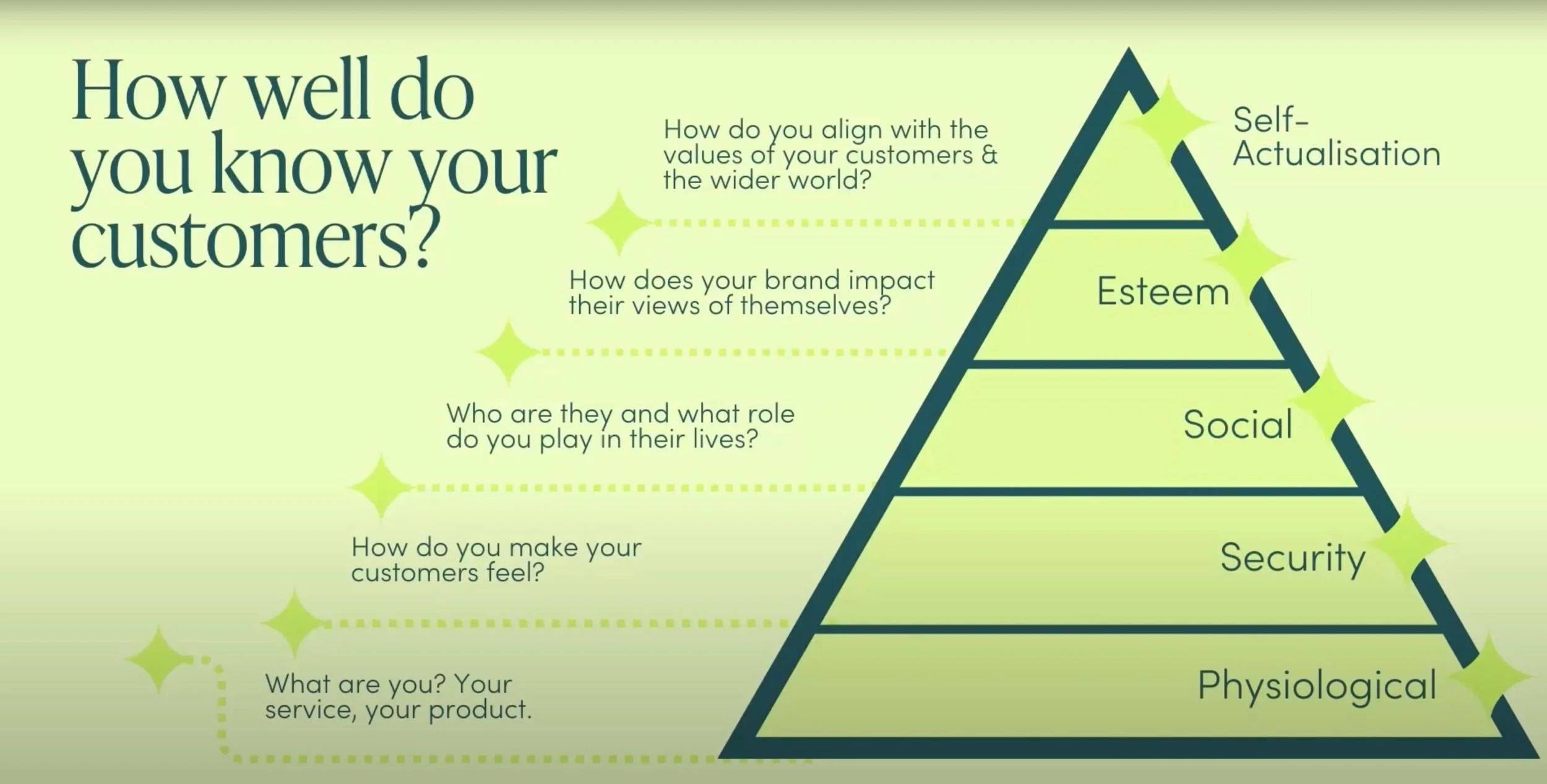Using Maslow’s Heirarchy of Needs to Encourage Customer Loyalty
In the highly competitive worlds of hospitality, travel, food and drink, loyalty isn’t won by simply meeting customer expectations. Brands must connect with their customers on a much deeper level. The secret? Understanding not just what they need, but why they need it.
That begins with Maslow’s hierarchy of needs.
Rethinking Customer Insight
Traditional market research tends to focus on the functional. What do customers want? How do they rate our service? What do they think of our new menu? Useful, yes, but limited.
At Aviatrix, we believe transformative insight comes from going deeper. We go beyond the functional, to understand the emotional, psychological, and even aspirational needs that drive customer behaviour, which is where Maslow’s framework comes in.
Maslow’s hierarchy of needs outlines five levels of human need, from the most basic (physiological) to the more advanced (self-actualisation). It offers a lens through which we can understand not just what customers do, but what truly motivates them.
The basic principle here is the deeper you can go with your customers—from meeting their physiological needs to addressing self-actualisation—the more engaged and loyal they will become.
How to Apply Maslow’s Hierarchy to Customer Experience
Let’s take a look at each level of Maslow’s hierarchy of needs and how, when applied to a research project, this framework can help determine what you need to know about your customers, to inform your research.
1. Physiological Needs
At the base of the pyramid are basic survival needs - food, drink, shelter, rest.
For brands first level involves understanding what your product or service is at its core.
For hospitality, food and beverage brands, this could be looking at your hygiene factors. Is your food satisfying? Are the beds comfortable? If you’re not getting this right, nothing else matters.
2. Safety Needs
Once the basics are covered, the next level is safety, security and protection.
Is your environment clean and well-maintained? Do guests feel safe during their journey or stay? This has become even more relevant post-pandemic, where cleanliness and safety are top priorities.
This also includes psychological safety, do people feel they can bring their authentic self to your venue? Does it accommodate diversity, accessibility, and other such factors?
3. Belonging and Connection
Now we move into social needs, which in Maslow’s hierarchy of needs relate to a sense of belonging and acceptance within society.
Do your customers feel welcome? Do they experience a sense of belonging in your venue or brand experience?
Creating spaces and services where people feel seen, valued and part of a wider community is a huge driver of repeat visits.
4. Esteem Needs
The next level involves esteem, where individuals seek approval and recognition from others.
The deeper levels explore how your offering aligns with the customer’s identity and values.
Does your brand make people feel special, respected, or aspirational?
Think VIP experiences, thoughtful personalisation, or simply remembering a regular guest’s name and favourite drink.
5. Self-Actualisation
Finally, self-actualisation is about intrinsic motivation and living in alignment with one’s core values.
This is where true loyalty lives.
If your brand helps customers live in alignment with their values, they won’t just come back, they’ll become ambassadors. When customers proudly recommend your brand, you’ve achieved a deep connection.
Brands like Tony’s Chocolonely thrive here, by aligning product, purpose and people. The chocolate is great - but the mission matters more.
Designing Research That Reaches Higher
To tap into this deeper understanding, your research must be designed to go beyond functional questions and uncover emotional drivers and value alignment.
You can’t ask 50 questions, so you have to ask the right ones.
To go deeper, you have to:
Focus on outcomes, not opinions.
Prioritise qualitative insight as much as quantitative data.
Involve your team and stakeholders, to explore the full customer ecosystem.
Be open to challenge, especially if the findings disrupt your assumptions or confirmation bias.
It’s important to remember, research is always there to improve rather than reinforce existing beliefs.
Building Loyalty That Lasts
Understanding where your product or service fits in your customers’ hierarchy of needs will enable you to identify new opportunities to serve them better, and build emotional connections that go beyond transactions.
We help brands apply this thinking so they can uncover what really matters to their customers. If you're curious about how Maslow's hierarchy can transform your research strategy, you can watch our webinar on-demand where we discuss this in more detail.
Ready to go deeper? Get in touch, we'd love to help you uncover what really makes your customers tick.


